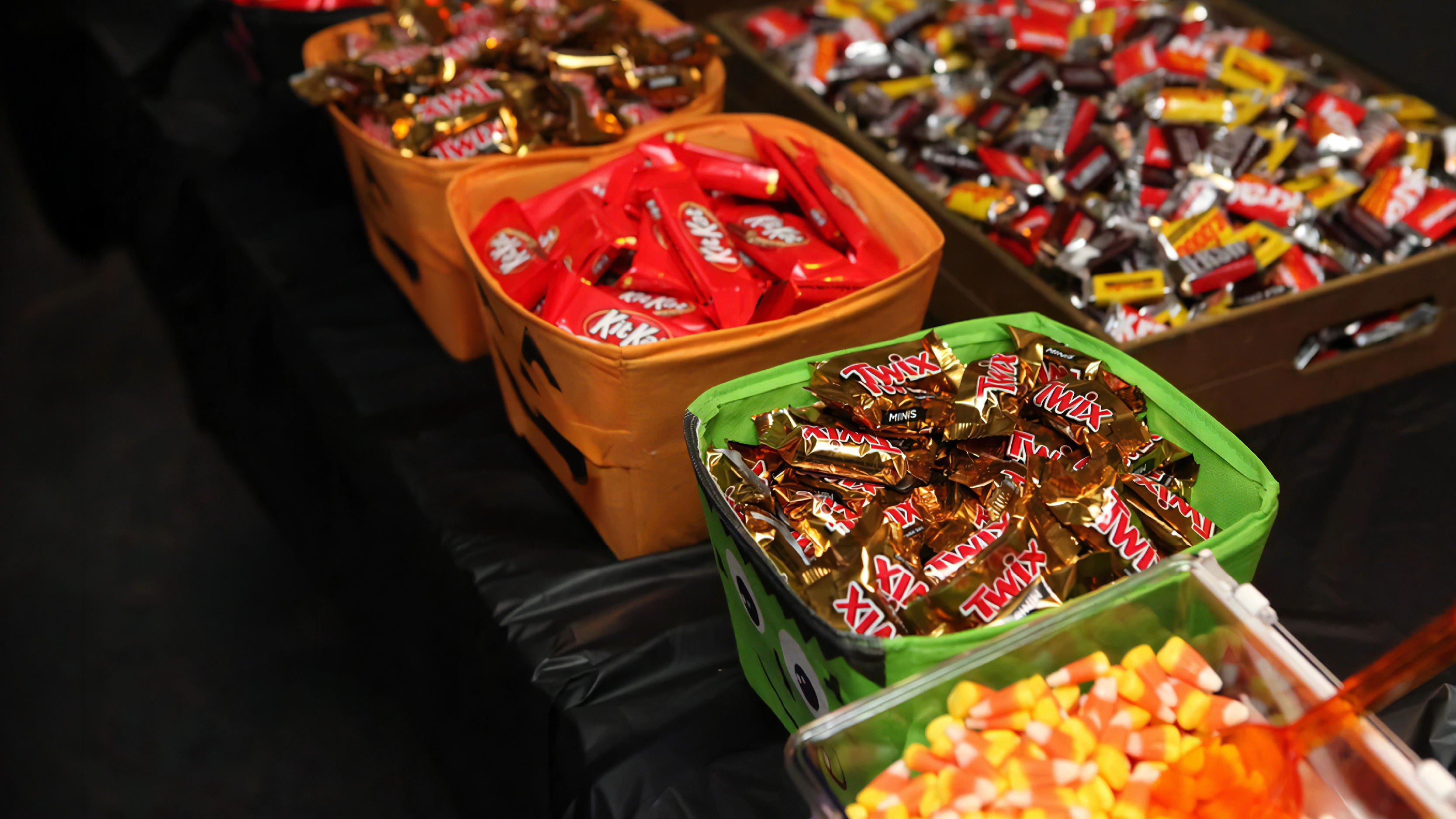You want to be the good house on Halloween night.
Not the one handing out off-brand gummies or awkwardly scrambling to split a fun-size bar between the last two kids in a group of four. But also not the person with five untouched bags of candy still sitting in the pantry come November.
Every Halloween, people try to strike the right balance between not quite enough and way overstocked. How much candy will you actually need? Which types will kids want? What happens if your estimates are wrong?
In other words, these are the same types of questions that supply chain professionals wrestle with every day — just on a larger (and sometimes slightly less sugary) scale. From inventory planning to demand forecasting, the mechanics behind our candy decisions mirror the challenges of running a modern, responsive supply chain.
At Anaplan, we help companies plan for far more than candy. But Halloween offers a fun and familiar lens into the everyday complexity of supply and demand planning — and why it matters to get it right. Because whether you're serving trick-or-treaters or thousands of retailers, one truth holds:
Planning isn’t just about having enough. It’s about having the right stuff, in the right place, at the right time.
Demand forecasting: Don’t let it scare you
When it comes to Halloween, no one wants to run out of candy halfway through the night — or be stuck with three pounds of taffy no one wanted. But how do you know how much to buy?
To try and gauge future candy demand, you might ask yourself:
- How many kids came by last year?
- Is it a weekend this year? (More kids)
- Is the weather good? (Definitely more kids)
- Are other neighbors decorating? (The “candy economy” thrives in festive neighborhoods)
- What candy is trending? (Did black licorice make a miraculous comeback?)
Even informally, you’re building a demand forecast. You’re combining historical data, current variables, and external signals to make a bet on what will be needed — and when.
And in business, this is exactly what demand planning teams do. But instead of estimating neighborhood foot traffic, they forecast sales volumes across SKUs, regions, and channels. They balance historical sales with real-time inputs like promotions, market trends, and external disruptions.
And just like your candy stash, the cost of getting it wrong adds up. Stock too little, and you miss out on sales (or disappointed trick-or-treaters). Stock too much, and you’re stuck with excess inventory (or a pantry full of candy that no one likes).
Inventory planning: From bulk bags to balanced stock
Once you’ve made your candy demand forecast, it’s time to decide what to actually buy. Do you go all-in on chocolate? And how many bags do you really need?
This is where inventory planning comes into play. The goal is to strike the right balance: enough quantity to last the night — but not so much that you're left with a surplus that sits on the shelf for months.
You might think about:
- How many types of candy you want to offer
- How much storage space you have
- When to buy (and what deals are available)
- Whether you can restock easily if you run out
- Your personal tolerance for leftovers
In supply chain terms, this is assortment, safety stock, lead time, and working capital — all rolled into a candy decision. Companies go through similar exercises at much larger scales: choosing which SKUs to prioritize, where to store inventory, how much to hold back as buffer, and when to replenish.
But even the best-laid plans need agility. When demand surges or weather disrupts supply, responsive planning lets you pivot quickly — reallocating stock, adjusting shipments, and staying ahead of last-minute surprises.
Get your forecasts right, and you stay lean without disappointing your “customers.” Get it wrong, and you’ve either overcommitted your budget or under-delivered on expectations.
Performance measurement: Don’t let bad planning come back to haunt you
The next morning, you sort through the aftermath. A near-empty bowl (good), no disappointed kids (better) — but you’ve also got two unopened bags of licorice that no one wanted.
Now it’s time to assess performance.
Just like in supply chain planning, success isn’t just about surviving the event — it’s about measuring what went right, what went wrong, and how you can improve. Every insight can be critical for next year’s plan.
In enterprise supply chains, performance measurement plays a similar role:
- Service level: Did you meet demand without stockouts or backorders?
- Inventory turns: Were you efficient in your inventory investment?
- Cost to serve: Did the candy (or product) mix balance cost and preference?
- Forecast accuracy: How close were your predictions to actuals?
The best planning teams treat every cycle as a learning opportunity. With robust post-event analysis, they refine their forecasts, fine-tune their strategies, and build better plans. It’s not about perfection — it’s about progress.
How the pros do it: The supply chain planning playbook
Planning for Halloween candy might seem lighthearted, but for consumer product and retail companies, one-time seasonal events like this are a serious challenge. There’s no opportunity to reforecast or restock a week later — you either get it right or miss your window. Getting it right requires a delicate balance between cost, demand fulfillment, and acceptable risk — something even the most advanced planners wrestle with when managing seasonal inventory.
So how would a seasoned supply chain professional tackle Halloween like an enterprise-level operation?
1. Build a baseline forecast
- Use historical data (past turnout, trends, and weather)
- Layer in real-time signals — like shifting Halloween popularity or local events — to fine-tune accuracy.
2. Segment your “customer” base
- Kids 5–8? High affinity for chocolate minis.
- Teens? Sour candy and brand names win.
- Parents? They’re eyeing the leftovers. Plan accordingly.
3. Optimize your mix
- Model candy assortments by cost, popularity, and quantity.
- Prioritize margin-friendly crowd-pleasers (no one needs 40 units of black licorice).
4. Plan for constraints
- Budget, shelf space, and late-season candy shortages are real. Build contingency plans.
- Factor in lead times for popular treats — especially if you’re shopping late in the game.
5. Monitor and adapt
- Use a “rolling forecast” to adjust based on early demand signals (e.g., how fast the bowl is emptying).
- Track in-the-moment performance and reallocate inventory.
6. Analyze and learn
- Post-event, analyze which SKUs (candies) performed, what got left behind, and what you’d change next year.
- Feed those insights into next Halloween’s plan.
Bonus: If you were using Anaplan — with Forecaster predicting demand and Polaris engine at the core, crunching quintillions of addressable line-item cells — you could anticipate the candy needs of every trick-or-treater on Earth, down to the house, age, and favorite treat. The only downside? No leftover candy for the parents.
Planning sweet success
Whether you’re handing out candy or managing global supply chains, the key to getting it right is planning with precision, visibility, and adaptability. And while most of us are still guessing between chocolate or gummies, supply chain leaders using AI-driven scenario planning platforms like Anaplan are modeling complex variables at scale — and turning uncertainty into confident decisions.
Because at the end of the day, it’s not about the candy. It’s about having the right plan to deliver what people want, when they want it. So, this Halloween, skip the guesswork. It’s time to treat your supply chain to something sweet.



